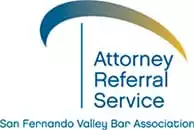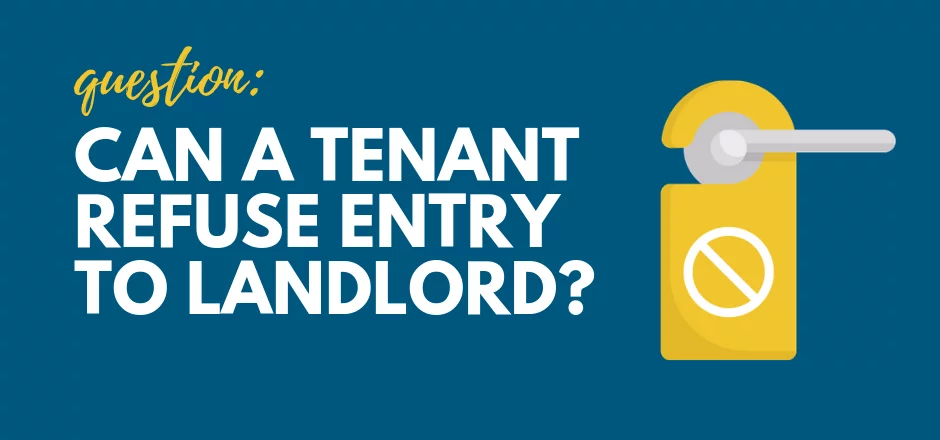Can a Tenant Refuse Entry to Landlord in California?
Landlord-tenant law protects a tenant’s rights to privacy as well as a landlord’s right to entry. This causes confusion among renters so we thought we’d take a look at one of the most common questions: Can a tenant refuse entry to landlord in California?
Can a Tenant Refuse Entry to Landlord in California?
You might think that signing a lease and taking the keys to a rental unit, whether an apartment or otherwise, means the unit is essentially yours.
This is theoretically correct, but the law doesn’t completely exclude the owner or property manager from being able to access the property. Depending on the situation, a landlord might have the right to enter – even without proper notice.
Here’s what you need to know about landlord-tenant rights under California law.
The Tenant’s Right to Privacy
Once a lease is signed, the tenant has a right to “quiet enjoyment” of the property. This right applies to all aspects of the property included in the lease. These areas may include residential living spaces, balconies, porches, yards, sheds, or garages. If they are included in the lease, the tenant has semi-exclusive rights to them for the duration.
So let’s say the landlord randomly shows at a property in the middle of the day; they say they want to check the pipes in the basement. The tenant has received no notice. In this instance, it is within their rights to refuse entry to the landlord.
There are, of course, some exceptions to the rule.
The Landlord’s Right to Enter in Emergencies
The landlord is the owner of the property. They, or their appointed trustee (e.g., a property manager), will occasionally need to enter the property.
The state of California does require the landlord give sufficient notice, except in the event of an actual emergency.
The question, of course, is how one defines an “emergency.” This is important because California courts often side with tenants in instances where a landlord enters property without permission. However, the landlord has to have a very good reason for needing to get inside.
Here are the common criteria for classifying emergencies:
- A situation in which notice would not be practical
- A situation that threatens the safety of the tenant or other residents
- A situation in which not entering would cause damage to the property
Examples of emergencies might include:
- Fires
- Gas leaks
- Flooding
- An emergency caused by a natural disaster (such as the devastating fires of 2018)
Other Reasons the Landlord Can Enter
Emergencies aren’t the only reason your landlord or their manager can enter the property. Generally speaking, the landlord has rights to maintain his property, to take care of issues pertaining to renting or selling the property, or to address any health or safety issues. They can also enter the premises at any time if granted permission by the courts.
Some specific examples of non-emergency reasons for entry include:
- Inspections: The landlord may make agreed-upon inspections, usually on an annual basis, to determine if any repairs need to be made to the unit. They may also inspect the property when a tenant is scheduled to move out. This may happen when the tenant gives notice, so the landlord can make repairs before showing the unit to prospective tenants. It is also standard to have a walk-through inspection once the tenant has moved out.
- Repairs: The landlord has the right to maintain and make repairs to their property. These repairs may include regular maintenance fixes as well as those the tenant has requested.
- Improvements: The landlord maintains the right to improve the property. For example, they may want to add a dishwasher or a washer/dryer to a rental that did not previously have them.
- Showings: People who will be renting the unit after the tenant leaves, or those who may be purchasing the property, may be shown the unit. The landlord can also show the unit to contractors, third-party repair people, mortgage company representatives, and others.
- Abandonment: The tenant generally forfeits the right to privacy once they have abandoned the property. The landlord can enter to clean the unit out, make repairs, and get the unit ready to be rented again.
- Normal services: This depends on what is outlined in your lease. For example, your lease may stipulate the landlord will enter once per month for extermination or for other maintenance services, such as changing filters.
- Health or safety violations: The landlord has the right to correct any code violations caused by a tenant.
Your landlord can also enter the rental unit to serve notices of eviction. In these cases, they are usually accompanied by a police officer for safety and witness. This isn’t common practice, though. In most cases, a landlord can serve a notice of eviction in California by posting it on the door of the property.
Guidelines for Notice and Entering
Just because a landlord can enter, doesn’t mean they can do so whenever they’d like. There are some guidelines for giving notice a landlord must follow, or the tenant can refuse entry.
For example, let’s say the landlord plans to put the property up for sale. They must give the tenant notice in writing, but the notice must have been given within 120 days of the entry. In this case, the landlord only has to give 24 hours oral notice that they will be entering to show the property. They must also leave a note inside the property to say they were there. After the 120 days has expired, the landlord needs to renew the notice, clarifying the property is still for sale.
Most other non-emergency reasons for entry require 24 hours notice in writing. The landlord is expected to enter the property during what are standard business operating hours.
The state of California generally expects these hours to be Monday through Friday, between eight in the morning and five in the evening. The notice must be specific, including the estimated time and the reason the landlord needs to access the unit. The tenant can waive the requirement for notice if they call for assistance and agree for the landlord to otherwise enter.
Conclusion
So, can a tenant refuse entry to landlord in California?
There are very few reasons for a landlord to enter a rental unit once it has been taken over by the tenant.
Landlords can enter a rental property to address issues involving repairs and emergencies, as these may pose danger to you and your neighbors. A landlord does not have the right to harass a tenant for not letting them into the property for any other reason.
If you’re experiencing a dispute with either your landlord or tenant, you may want to consider finding an attorney familiar with landlord-tenant disputes.
Are you in search for a certified attorney to represent you?
Let us help you find one today!



I asked my landlord to put son on lease, after filling out documents he denied application. He didn’t run credit. He’s told me that son has to leave and served a 24-hour notice to enter to confirm if I have abandoned/vacated. I am still there so can I tell him no in regards to entering?
Hi Morgan,
For the most accurate answer, it’s best to seek guidance from an experienced tenant attorney in your area. If you’re in Los Angeles, we can help you get started – you can reach us (818) 340-4529
Do you know who to call for an attorney in the Sacramento area?
Hi Tom,
For the most accurate answer, please give us a call to speak with one of our friendly Attorney Referral Consultants.